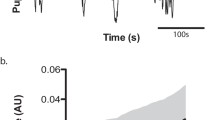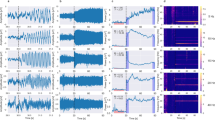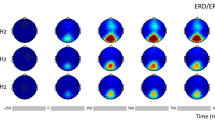Abstract
Single-sweep visual evoked potential analysis would be useful in clinical electro-physiology practice because it would make possible the evaluation of transient phenomena, but recording single-sweep visual evoked potentials is difficult because of the low signal-noise ratio. To increase this ratio we used a filter based on an autoregressive with exogenous input model. We studied a group of 12 diabetic patients matched with a control group of 14 normal subjects. The model, in most cases, allowed us to extrapolate the P100 component from each single sweep of visual evoked potential. The visual evoked potential values obtained by means of averaging were not significantly different in the groups studied, but single-sweep analysis showed different distribution of the P100 component amplitude. The preliminary results of our study evidenced differences in the amplitude and latency distribution of normal and diabetic subjects, thus confirming the power of this new technique and its ability to obtain some information that is masked by the averaging method.
Similar content being viewed by others
References
American Electroencephalographic Society, Guidelines for clinical evoked potential studies. J Clin Neurophysiol 1984; 1: 3–53.
McGillem CD, Aunon JL, Yu K. Signal and noise in evoked brain potentials. IEEE Trans Biomed Eng 1985; 32: 1012–6.
McGillem CD, Aunon JL, Childers DG. Signal processing in evoked potential research: Application of filtering and pattern recognition. CRC Crit Rev Bioeng 1981; 6: 225–65.
McGillem CD, Aunon JL. Measurement of signal components in single visually evoked brain potentials. IEEE Trans Biomed Eng 1977; 24: 232–41.
Aunon JL, McGillem CD, Childers DG. Signal processing in evoked potential research. Averaging and modelling. CRC Crit Rev Bioeng 1981; 5: 323–67.
Childers DG, Perry NW, Fischler IS, Boaz T, Arroyo AA. Event related potentials. A critical review of methods for single trial detection. CRC Crit Rev Biomed Eng 1987; 14: 185–200.
Cerutti S, Baselli D, Liberati D, Pavesi G. Single sweep analysis of visual evoked potentials through a model of parametric identification. Biol Cybernet 1987; 56: 111–20.
Early Treatment Diabetic Retinopathy Study Research Group. Early photocoagulation for diabetic retinopathy. ETRDS report No. 9. Ophthalmology 1991; 98: 766–85.
Zetterberg LH. Estimation on parameters for a linear difference equation with application to EEG analysis. Math Biosci 1969; 5: 227–37.
Author information
Authors and Affiliations
Rights and permissions
About this article
Cite this article
Magni, R., Giunti, S., Bianchi, A. et al. Single-sweep analysis using an autoregressive with exogenous input (ARX) model. Doc Ophthalmol 86, 95–104 (1994). https://doi.org/10.1007/BF01224631
Accepted:
Issue Date:
DOI: https://doi.org/10.1007/BF01224631




